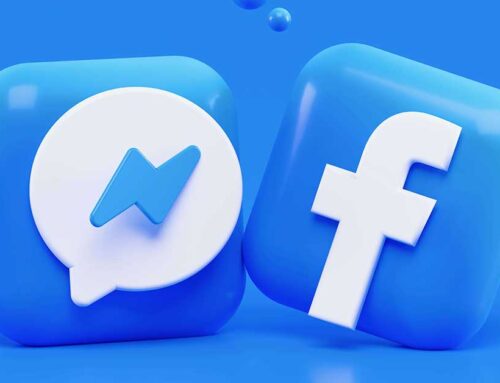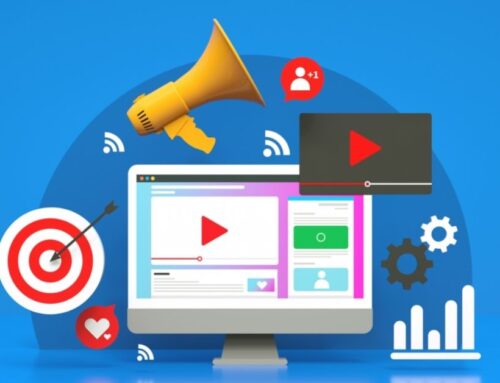To market your service or product effectively, you need insight into your ideal customer. There are many reasons why you should have these understandings. In particular, it helps you identify and understand your customers. That way, you know how to reach them with your messaging. This is where the customer avatar comes into play, and if you're not sure what this means or where to start, let Charley Grey show you!
What Is a Customer Avatar?
A customer avatar is a representation of your ideal customer. Sometimes it's also referred to as a buyer persona, marketing persona, or customer profile. Yet, this is the type of person you know will want to purchase your product or service.
You've most likely heard this term before, especially in the digital marketing space. However, many can get confused or don't take the time to understand the true meaning of a customer avatar or client avatar. So here's a better explanation.
A customer avatar IS:
- A necessary element to your overall marketing strategy
- A customer profile of wants, needs, and pain points
- A detailed description of an individual who depicts your target audience
- An outline of the audience based on data and research
What a customer avatar IS NOT:
- A profile of all your potential and existing customers
- A short description lacking important information
- An assumption of characteristics
- An analysis of anyone who might buy your product or service
A customer avatar will provide valuable insights into who your customer is, what they need, where they spend time, and how your offer solves their problem.
When building a customer avatar, you ensure a strong marketing plan and a viable way to achieve results. Just like a marketing strategy, a customer profile serves as a guide. It keeps you from wasting your resources, targeting the wrong customers, and using the wrong messaging. Essentially, it is the foundation of marketing and business success.
Why Do You Need a Customer Avatar?
A customer avatar helps you fully understand who you're trying to reach to make sales. The perfect customer will spend more on your product because they like your brand.
In short, you want it to be someone who will make repeat purchases and refer your business to others. That way, your business grows, and the customer gets what they need to solve their problems or make their life better.
Furthermore, having an accurate avatar of your ideal customer allows you to tailor your marketing messages. Plus, it will enable you to improve specific business areas, such as user experience.
User Experience
For example, if you have a mobile app, you can use customer data and analytics to create a customer profile. Therefore, you personalize the customer's experience on the mobile app by having the ability to meet their individual needs. It's a win-win for your business and the customer because they're getting what they want while you can grow your business.
Product Development
With a better understanding of who your client is, you can develop better products. Understanding your ideal customers' wants allows your business to create products and services they resonate with — making it more likely for them to purchase from you. Furthermore, you can determine their problems and offer concrete solutions.
Content Marketing
Having a grasp of who your client is helps you create relevant content for your marketing efforts. As a result, you pique their interest and encourage them to engage with your business. Instead of assuming what content they want to consume, you can use your data to offer high-value, quality content.
Email Marketing
When you know who you're talking to, creating emails gets easier. As a result, you increase your open rates, click-throughs, and conversions. Moreover, you gain more insight into what type of language speaks to your audience. More specifically, which types of subject lines, body copy, and call to action buttons align with your ideal customer.
In addition, you can determine how to segment your email list. That way, you get to design a unique marketing campaign for each profile.
Paid Advertising
Customer profiles reveal which platforms to run ads on, who you should target, and what specific messaging to use. Customers can then look forward to discovering and interacting with your business.
Plus, you get to achieve a better return on your investment.
How to Create a Customer Avatar
If you're creating your first avatar, this may require some time and effort. Instead of basing your profiles on guesswork, you need data to ensure you cover all the basics. Rest assured that your efforts will be worth it in the long run.
The following steps will make the process of customer avatar creation less overwhelming.
1. Research
You'll need to execute thorough market research to determine your ideal customer. The great news is you can use this type of information from an existing customer. Ideally, this would be someone who purchased your product or service in the past.
In that case, you can get the information you need from your customer base and gain additional insight. Some ways you can collect data are surveying your audience, sending a questionnaire, interviews, or polling.
The trick to creating a customer avatar is by making it all about them and not you. You want to get inside their mind, so this might mean you'll have to perform secondary research. Gather data from third-party analytics, review social media conversations, and look at Q&A forums.
2. Outline Your Customer Avatar's Information
Once you've gathered your information, you can build your customer avatar. Start by naming this profile. Doing so will help you picture your customer. You could also add a stock photo to the profile to help you visualize them.
Next, you can move on to the following sections of filling out your avatar:
- Demographics: Consider filling out information about how old they are, what their gender is, marital status, location, occupation, income, etc.
- Goals and values: What are their dreams? What are they trying to achieve? What do they stand for?
- Resources: Where do they gather their information? Do they read books or websites? Do they attend online conferences?
- Challenges: What are their pain points? What challenges do they face? What problems are they trying to solve?
- Objections: What are their reasons for objecting to purchasing your offer?
3. Repeat the Steps as Needed
Most small businesses have more than one ideal customer. If that's the case for you, you'll have to create a customer avatar for each one. Yet, once you've made one avatar, the process after that is a breeze.
Knowing Your Customer Is the Key to Success
Remember, your customer avatar is the primary element of your success in business and marketing. It allows you to better understand your customers and who you serve. That way, you can attract more people who are the right fit. Plus, the customer easily gets what they want, and they'll know who to turn to when they need it most.
Additionally, identifying who you're marketing your business or product to will help Charley Grey design and launch the right website for your business. When we understand the pain points, we can craft the correct copy and marketing language that attracts your ideal customer to your new site. If you want to learn more about how we can help with your marketing, then contact us today!
Photo: CoffeeBeanWorks via Pixabay








